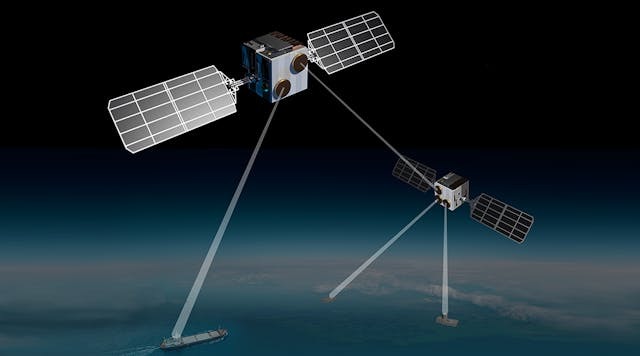Introduction 🌍📡
Satellite communication systems have transformed global connectivity, enabling everything from GPS navigation to high-speed internet and television broadcasting. But behind these advanced technologies are electrical engineers who design, build, and maintain the complex electronic systems that make satellite communication possible.
Electrical engineers play a critical role in signal processing, power systems, antenna design, and communication protocols, ensuring that satellites function efficiently and reliably. In this article, we’ll explore how electrical engineers contribute to satellite communication systems and why their expertise is essential to modern telecommunications.
The Role of Electrical Engineers in Satellite Communication 🔧📶
Electrical engineers are involved in various stages of satellite communication, including design, testing, deployment, and maintenance. Their contributions can be categorized into the following key areas:
1. Satellite Communication System Design 🏗️💡
Electrical engineers are responsible for designing the core electronics of satellites, ensuring they can send and receive signals effectively. This includes:
✅ Transponders: Convert and amplify signals for communication.
✅ Power Distribution Systems: Ensure the satellite has stable power from solar panels and batteries.
✅ Onboard Computers & Processors: Handle data transmission and system operations.
✅ Modulation & Demodulation Circuits: Convert signals into a form suitable for transmission.
2. Antenna & RF (Radio Frequency) System Development 📡🔊
Satellite communication relies on radio waves to send signals between Earth and space. Electrical engineers work on:
✔️ Antenna Design: Optimizing shape, size, and placement for efficient signal transmission.
✔️ Frequency Allocation: Ensuring signals do not interfere with other communication systems.
✔️ RF Amplifiers & Filters: Enhancing signal strength and clarity.
✔️ Beam Steering Technology: Directing signals to specific locations on Earth.
3. Power Systems & Energy Management 🔋☀️
Satellites rely on solar panels to generate power and batteries for energy storage. Electrical engineers design:
🔹 Solar Panel Arrays: Convert sunlight into electricity.
🔹 Power Regulation Circuits: Ensure stable voltage and current supply.
🔹 Battery Management Systems: Optimize energy storage and prevent power failures.
4. Signal Processing & Data Transmission 💾📡
To ensure reliable communication, electrical engineers develop:
🔸 Error Correction Algorithms: Improve signal accuracy.
🔸 Data Compression Techniques: Reduce transmission bandwidth usage.
🔸 Encryption & Security Protocols: Protect communication from cyber threats.
🔸 Adaptive Modulation Methods: Adjust transmission settings based on conditions.
5. Ground Station Communication & Network Integration 🌐🔗
Satellites must communicate with ground stations to relay information. Electrical engineers design:
✔️ Earth Station Receivers & Transmitters: Manage two-way communication.
✔️ Network Synchronization Systems: Ensure seamless data flow between satellites and ground networks.
✔️ Cloud Integration & AI Processing: Enhance real-time satellite data analysis.
Challenges Faced by Electrical Engineers in Satellite Communication ⚠️🚀
Working in space communication presents unique challenges:
1️⃣ Harsh Space Environment: Satellites must withstand radiation, extreme temperatures, and vacuum conditions.
2️⃣ Signal Delays & Interference: Engineers must minimize latency and prevent cross-channel interference.
3️⃣ Limited Power Supply: Power efficiency is critical since satellites rely on solar energy.
4️⃣ High-Cost & Long-Term Reliability: Satellites must operate flawlessly for decades, requiring high-quality components.
Future Trends in Satellite Communication 🚀🔮
The future of satellite communication is evolving with new advancements driven by electrical engineering:
🌍 Low Earth Orbit (LEO) Satellites: Companies like SpaceX (Starlink) and OneWeb are launching thousands of small satellites to provide global broadband coverage.
📶 5G & Satellite Integration: Engineers are working on hybrid systems that combine satellite networks with 5G technology for improved connectivity.
🤖 AI & Machine Learning in Satellites: Future satellites will use AI algorithms to optimize signal routing, automate maintenance, and detect anomalies.
🔋 Advanced Power Solutions: New battery technologies and wireless energy transfer methods will improve satellite longevity and efficiency.
Conclusion 🌍🚀
Electrical engineers are the backbone of satellite communication systems, ensuring seamless global connectivity. From designing high-frequency antennas to developing energy-efficient power systems, their expertise enables satellites to function efficiently in space.
As technology advances, electrical engineers will continue to play a crucial role in enhancing satellite performance, reducing costs, and expanding global coverage. If you’re passionate about electronics, space technology, and wireless communication, a career in electrical engineering for satellite systems could be your perfect fit!


